
Kia Carnival Owners Manual
Limitations of the systemDriving your vehicle / Smart cruise control system (SCC) / Limitations of the system
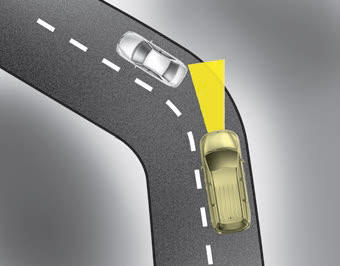
The SCC may have limits to its ability to detect distance to the vehicle ahead due to road and traffic conditions.
On curves
- On curves, the SCC may not detect a moving vehicle in your lane, and then your vehicle could accelerate to the set speed. Also, the vehicle speed will rapidly slow down when the vehicle ahead is recognized suddenly.
- Select the appropriate set speed on curves and adjust your vehicle speed by depressing the accelerator or brake pedal according to the road condition ahead and driving condition.
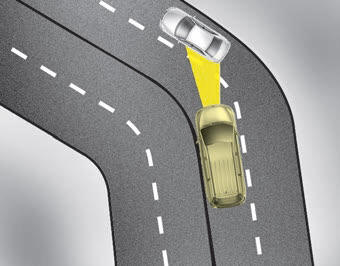
- Your vehicle speed can be reduced due to a vehicle in the adjacent lane. Adjust your vehicle speed by depressing the brake pedal according to the road condition ahead and driving condition. Apply the accelerator pedal and select the appropriate set speed. Check to be sure that the road conditions permit safe operation of the SCC.
On inclines
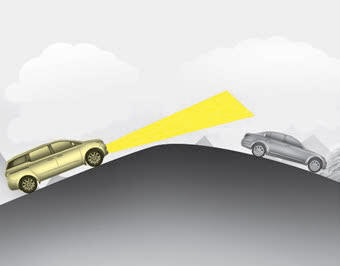
- During uphill or downhill driving, the SCC may not detect a moving vehicle in your lane, and cause your vehicle to accelerate to the set speed. Also, the vehicle speed will rapidly slow down when the vehicle ahead is recognized suddenly.
- Select the appropriate set speed on inclines and adjust your vehicle speed by depressing the accelerator or brake pedal according to the road condition ahead and driving condition.
Lane changing
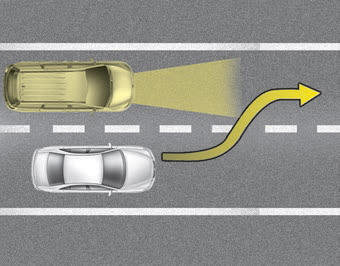
- A vehicle which moves into your lane from an adjacent lane cannot be recognized by the sensor until it is in the sensor's detection range.
- The sensor may not detect immediately when a vehicle cuts in suddenly. Always pay attention to the traffic, road and driving conditions.
- If a vehicle which moves into your lane is slower than your vehicle, your speed may decrease to maintain the distance to the vehicle ahead.
- If a vehicle which moves into your lane is faster than your vehicle, your vehicle will accelerate to the selected speed.
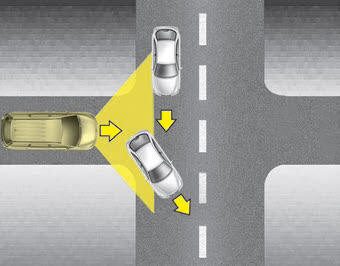
- Your vehicle may accelerate when a vehicle ahead of you disappears.
- When you are warned that the vehicle ahead of you is not detected, drive with caution.
Vehicle recognition
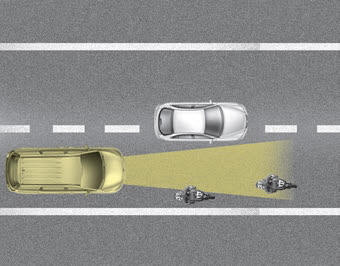
Some vehicles ahead in your lane cannot be recognized by the sensor as follows:
- Narrow vehicles such as motorcycles or bicycles
- Vehicles offset to one side
- Slow-moving vehicles or suddendecelerating vehicles
- Stopped vehicles
- Vehicles with small rear profile such as trailers with no loads
A vehicle ahead cannot be recognized correctly by the sensor if any of following occurs:
- When the vehicle is pointing upwards due to overloading in the trunk
- While making turns by steering
- When driving to one side of the lane
- When driving on narrow lanes or on curves
Adjust your vehicle speed by depressing the brake pedal according to the road condition ahead and driving condition.
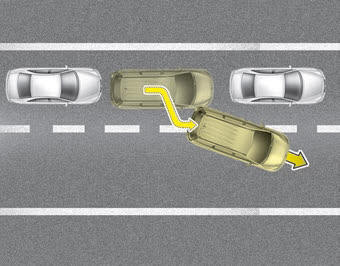
- When vehicles are at a standstill and the vehicle in front of you changes to the next lane, be careful when your vehicle starts to move because it may not recognize the stopped vehicle in front of you.
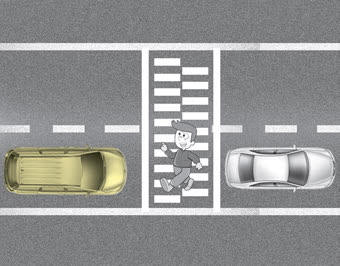
- Always look out for pedestrians when your vehicle is maintaining a distance with the vehicle ahead.
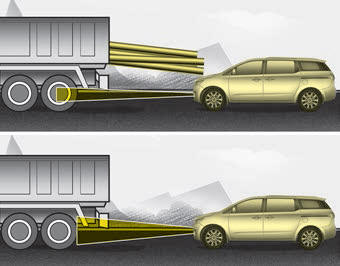
- Always be cautious for vehicles with higher height or vehicles carrying loads that sticks out to the back of the vehicle.
![]()
If an emergency stop is necessary, you must apply the brakes and not rely on the Smart Cruise Control.
![]()
Keep a safe distance according to road conditions and vehicle speed. If the vehicle to vehicle distance is too close during high-speed driving, it may cause a serious collision.
![]()
- The SCC cannot recognize a stopped vehicle, pedestrians or an oncoming vehicle. Always look ahead cautiously to prevent unexpected and sudden situations from occurring.
- When other vehicles are changing lanes in front of you frequently, the SCC may not detect the vehicle at certain times. Always look ahead cautiously to prevent unexpected and sudden situations from occurring.
- After an engine start, please stop for several seconds. If system initialization
is not completed, the SCC does not normally operate.
- After an engine start, if any objects are not detected or the sensor cover is
obscured with foreign substances, there is a possibility that the SCC system may
not work.
- Below conditions are not allowed: over baggage loading in a trunk, suspension
remodeling, tire replacement with unauthorized tires or tires with different worn-out
and pressure levels.
![]()
The SCC may not operate temporarily due to electrical interference.
This device complies with Industry Canada licence-exempt RSS standard(s).
Operation is subject to the following conditions:
(1) This device may not cause interference, and
(2) This device must accept any interference, including interference that may cause
undesired operation of the device.
(3) Changes or modifications not expressly approved by the party responsible for
compliance could void the user's authority to operate the device.






